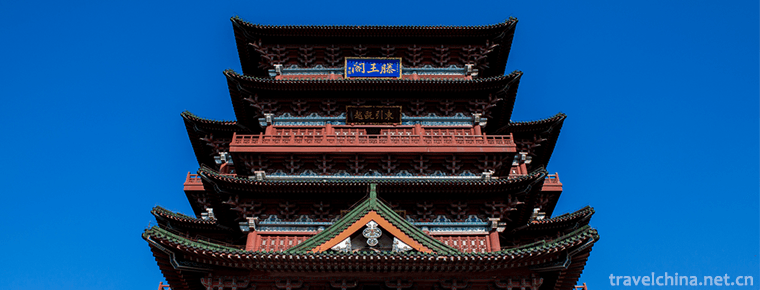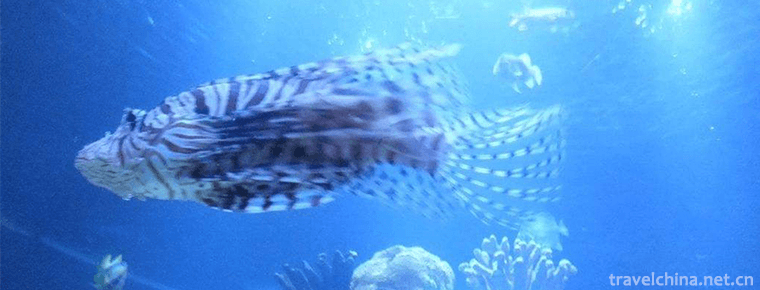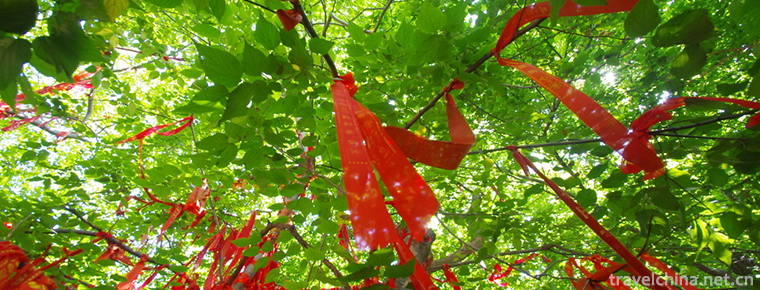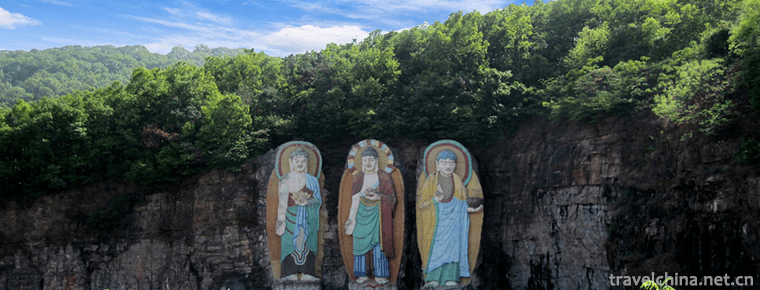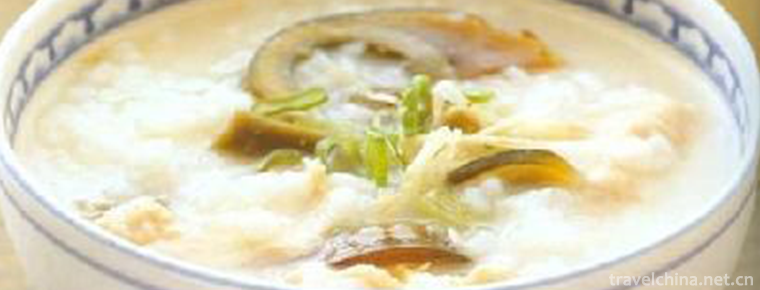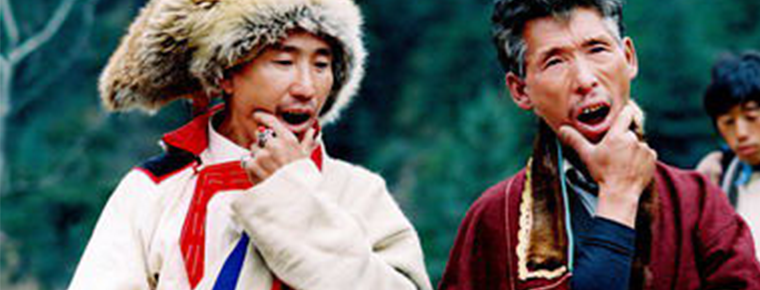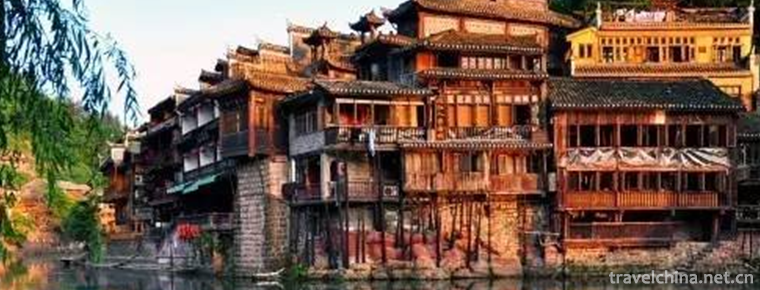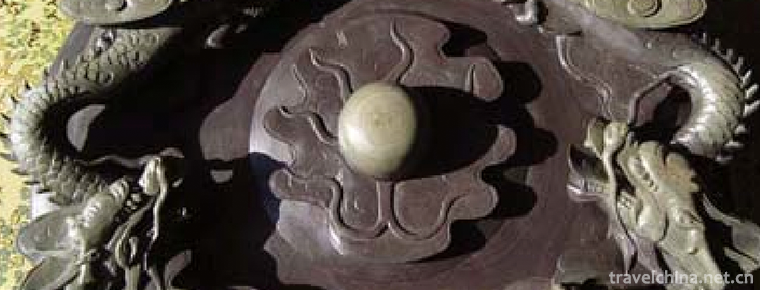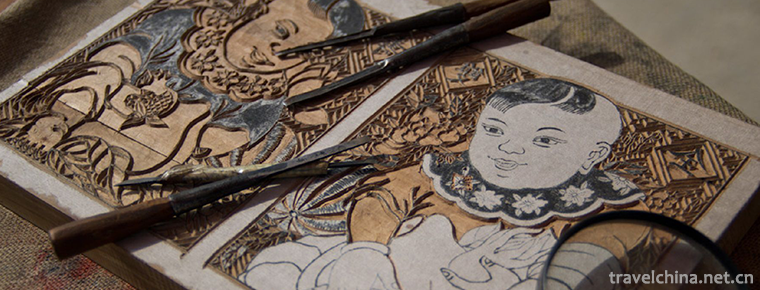Gongga Mountain
Gongga Mountain
Gongga Shan, also known as Minya Konka, is located in the south of Kangding, Sichuan Province. It is the main peak of Daxue mountain. There are 45 peaks with an altitude of more than 6000 meters. The main peak is even higher than the Dadu River in the East. It is the highest peak in Sichuan Province, known as "the king of Shu mountain", and is a national scenic spot.
brief introduction
Gongga Shan, also known as Minya Konka, is located in the south of Kangding, Sichuan Province. It is the main peak of Daxue mountain. There are 45 peaks with an altitude of more than 6000 meters. The main peak is even higher than the Dadu River in the East. It is the highest peak in Sichuan Province, known as "the king of Shu mountain", and is a national scenic spot.
The main peak of Gongga Mountain is composed of granodiorite, which is affected by the Ocean monsoon, forming a variety of vegetation and natural ecological environment. There are two sister canyons in the mountains: Yanzigou and Hailuogou, among which Yanzigou is also known as the Oriental Alps. The altitude of the snow line in Gongga Mountain is 4600-4700 meters, and the glacier development scale is large. Hailuogou Glacier, the largest glacier on the east slope, is 14.2 km long and 2.850 m below the end. It has fallen into the forest belt. Under the long-term glaciation, the peak develops into a cone-shaped large angle peak, surrounded by 60 ° to 70 ° cliffs, making it difficult to climb.
Minya Konka is located in the eastern edge of Qinghai Tibet Plateau, in the middle of Daxue mountain in Hengduan Mountains, between Dadu River and Yalong River. "Gongga Mountain" in Tibetan means ice and snow. "Ga" means white, which means "white iceberg", also means "the highest Snow Mountain". The mountain is about 60 km long from north to South and 30 km wide from east to west. Its main peak is 7.556 meters above sea level. It is located between Kangding, Luding, Shimian and Jiulong counties in Sichuan Province.
Gongga Mountain is a famous mountain exploration and mountaineering Holy Land in the world, but Gongga Mountain is also the most difficult to conquer large-scale extremely high mountain, and its climbing difficulty is far greater than that of Mount Everest. According to statistics, so far, only 24 people have succeeded in climbing, but 37 people, including 14 foreigners, have been killed during and after climbing. The death rate of mountaineering is far more than 14% of Mount Everest and 30% of that of Mt. Georgi, only second to Mt. Meili and Mt. Yala.
Gongga Mountain is famous for its glaciers. There are 159 modern glaciers in the foothills, covering an area of more than 390 square kilometers. It is one of the earliest developed areas of oceanic glaciers in Shanghai in the world. Among them, there are Gongga 1, 2, 3 glaciers in Yanzigou, mizigou glacier, Hailuogou No.1 glacier, Gongba glacier and Bawang glacier. The ice thickness is 150-300 meters, which is very spectacular. Due to the erosion of glaciers, the steep peaks become pyramids, towering into the clouds and piercing the blue sky.
geographical position
Gongga Mountain scenic area is located in Luding, Kangding and Shimian counties of Ganzi Tibetan Autonomous Prefecture. With Gongga Mountain as the center, 145 ice peaks with an altitude of 5.6 km stand around the main peak of Gongga, forming a magnificent scene of surrounded by peaks and connected by snow capped mountains. There are more than 10 plateau lakes in Gongga Mountain Scenic Area, including Yanzigou, mugecoo, Wuxuhai, Renzonghai (also known as renzhonghai), bawanghai (also known as bawanghai), etc. some of them are at the foot of glaciers and some are surrounded by forests. The lake water is clear and transparent, maintaining the original and beautiful natural features. In the scenic area, the vertical zone spectrum is very obvious, the vegetation is complete, the ecological environment is primitive, and the flora is complex. There are 4880 species of plants identified. There are more than 20 kinds of animals under state protection. There are dozens of hot spring spots in the scenic spot, the water temperature is between 40 ℃ and 80 ℃, and some are above 90 ℃. The famous hot springs are Erdaoqiao in Kangding and the hot spring swimming pool in Hailuogou. There are also Paoma mountain, Gongga temple, Tagong temple and other Tibetan Buddhist temples. There are rich and colorful ethnic customs of Tibetan and Yi people. The famous peaks around Gongga Mountain are: Zhongshan Mountain, 6886m above sea level, 6618m at edejia peak, 6549m at redemoi peak, 5880m at Bijia mountain, 5878m at shehaizi mountain, 5924m at baihaizi mountain and 6070m at tianhaizi mountain.
Geology and geomorphology
There are many folds and faults in Gongga mountain area due to frequent geological tectonic activities. With the uplift of the mountain, the East and West slopes of the river form a canyon with a height difference of nearly 5000 meters. The main peak of Gongga Mountain has four main ridges: Northwest ridge, northeast ridge, southwest ridge and Southeast ridge. Due to the fact that the rocks in this area are mainly composed of granite, coupled with long-term ice erosion, the narrow ridge is like an inclined blade, the slope is steep, the rock is exposed, and the slope is more than 70 degrees. Gongga mountain area is also the peak concentration area of Hengduan Mountain system. There are more than 20 peaks with an altitude of more than 6000 meters nearby. There are about 45 glaciers in the mountainous area, with an area of 290 square kilometers, mainly valley glaciers, suspended glaciers and ice bucket glaciers are also distributed. There are 5 glaciers with a length of more than 10 km, and the longest Hailuogou Glacier, which is a famous Glacier Park in China, has all kinds of glacier wonders. Among them, the big ice waterfall is more than 1000 meters high and wide, especially spectacular. Due to the influence of climate, the glacier activity in Gongga Mountain is intense, and the lowest part of the glacier extends down to 2800 meters above sea level. Below the snow line, valleys and hillsides are covered with dense virgin forests. There are many kinds of plants in the forest, there are more than 40 kinds of rare plants. At the same time, it is also a paradise for wild animals, where there are more than 400 kinds of Alpine animals and forest animals. There are many hot springs and various tourist service facilities on the active fault zone.
The height of Gongga Mountain is far from that of ordinary famous mountains in the mainland. After climbing on the mountain, you can see that the vast white snow is crawling at the foot of the mountain. The broad vision and the sense of mountaineering achievement generated by the height of the mountain are definitely worth climbing. Due to the high altitude, the mountain climbers should not be forced to make full preparation due to the cold. Most climbers climb from the northwest Ridge Route, which is also the experience summed up by predecessors.
The Gongga Mountain is light green granodiorite. The main peak peak covered by ice and snow is similar to a platform, covering an area of about 70 square meters. Due to the North-South trend of Hengduan Mountains and Gongga mountains, the moist air from the South can drive northward along the valley. The climate around the main peak is humid and changeable, which is one of the reasons for the difficulty of climbing Gongga mountain. At the same time, Gongga Mountain is one of the earliest developed areas of marine glaciers in the world. Under the long-term glaciation, Gongga Mountain developed into a pyramid shaped big horn peak, with frequent ice and snow avalanches. The surrounding cliffs are surrounded by narrow ridges, which are like inclined blades. The slopes are steep and the rocks are exposed. The slopes are mostly more than 70 degrees. Moreover, the height drop is very large, with 6 in 20 kilometers, The altitude difference is more than 1000 meters, so the difficulty is reflected in the changeable weather and the steep route.
Gongga Mountain is also the world's largest relative elevation difference, reaching 6200 meters (the highest mountain from the foot to the top).
Glacier condition
More than 10 plateau lakes are distributed in the scenic area. The famous ones are mugecoo, Wuxuhai, renzhonghai, bawanghai, etc. they are located at the foot of glaciers or surrounded by forests. The water color is clear and transparent, maintaining the original and beautiful natural scenery, which is similar to "yaochi fairyland".
Most of the glaciers in Gongga mountain area are very rare low altitude marine glaciers. The formation time of this glacier is very short. Hailuogou and Yanzigou were formed 1600 years ago. Different from ordinary glaciers in the frigid zone, it is formed by the monsoon bringing water to the extremely high mountain areas, and the ice and snow activities at the top of the snow peak.
The most distinctive feature of Yanzigou is the "Chuan" shaped glacier near the viewing platform of the main peak of Gongga mountain. It is composed of three parallel large blue glaciers with ice thickness of 150-300 meters. They are Gongga No.1, No.2 and No.3 glaciers. The ice body is clear and transparent. Because of its gentle terrain, tourists can get close to the three glaciers.
Hailuogou Glacier tongue is 6 km long and 0.4-0.7 km wide, with the maximum thickness of 100-130 M. In the movement of the glacier, the formation of crystal like jadeite, crystal, highly ornamental glacier arch, curl, monoclinic, syncline structure caused by a single crack of glacier lamina is more than 100 meters long, 5-10 meters deep and 0.5-2 meters wide. In the process of glacier melting, various ice lakes, ice tables, ice caves, ice bridges and glacial rivers have been formed, which make tourists praise them. In addition, the lowest point of the glacier is 3000-3700 meters above sea level, which is from the watershed of the snowy mountains at an altitude of 5600 meters southeast of the main peak, which can be climbed by mountain climbers.
There are "three monsters" in glaciers
Strange: not cold. The climate on the glacier is warm. In summer and autumn, you can walk on the glacier in a thin shirt. You don't have to worry about "too cold on the ice".
Two monsters: ice avalanche. The great ice falls are active all the year round, and ice avalanches of different scales occur. The amount of collapse can reach millions of cubic meters at a time. At this time, the snow and ice fly and rumble through the canyon. You can hear it from a distance of one or two kilometers. The scene is spectacular.
Three Monsters: the structure is various. The glacier surface has countless, gorgeous wonderful scenery. Ice table, ice chair, ice lake, ice hole, ice mushroom, glacier gate hole and so on. There are so many wonders that people can't catch sight of. There will be new discoveries and new surprises.
Climate conditions
The climate in Gongga mountain area is deeply affected by altitude. The temperature decreases with the elevation, while the precipitation increases with the elevation. According to the analysis of observation data for many years, the annual average temperature direct decrease rate is 0.67 ℃ / 100M, and the annual precipitation gradient value is 67.5mm/100m, that is, every 100m elevation increases, the temperature decreases by 0.67 ℃ and the precipitation increases by 67.5mm. The precipitation gradient above 3000 meters above sea level may fluctuate, but the annual precipitation in the snow line may reach 3000 mm, still showing an increasing trend. This characteristic of mountain climate makes Hailuogou appear subtropical, warm temperate, cold temperate, sub frigid, frigid and polar zone climates from the mouth of the gully. For example, the annual average air temperature in Moxi Town, which is located at the foot of the eastern mountain, is 13 ℃, and the annual average temperature of Camp No. 4, 3400 meters above sea level in Hailuogou, is only 1 ℃ The annual average temperature is as low as - 9 ℃ near the snow line at an altitude of 4900 meters. The rainy season is from June to October every year, and the dry season is from November to May of the following year. The annual precipitation at the foot of the mountain is 800-900 mm, and the maximum precipitation on the mountain is more than 3000 mm, which is mainly concentrated in July, August and September. In summer, the cloud cover is large, and the daily temperature difference is also large. Near the snow line at an altitude of 4900 meters, the maximum temperature can reach 10 ℃ in the daytime under the sunlight in summer, but it can often drop to - 10 ℃ in the evening. The dry season is sunny and milder than other regions at the same latitude. The highest temperature in the year is July. Mountaineering activities mostly choose in the alternate period of dry season and rainy season.
Vegetation status
Special geographical environment and special climate conditions form multi-level three-dimensional plant belt and unique natural landscape. The mountains above 5000 meters above sea level are covered with snow all the year round; the low altitude, uninhabited piedmont zone is densely covered with forests, lush and lush, with primitive ecological environment. The forest is less affected by human activities, and the vegetation is complete. There are almost all plant species that can survive from subtropical zone to alpine cold zone. There are many kinds of rare plants, with more than 4880 kinds of plants, and more than 400 rare species under state protection There are also many ancient animals and plants called "living fossils" in the eastern River Valley. There are more than 400 species of wild animals living here, which can be called the Grand View Garden of wild animals and plants in the world. The original forest area of Hailuogou in Gongga Mountain is 1900-3600m, of which 1900-2200m is broad-leaved forest belt, 2200-2800m is coniferous forest belt, 2800-3600m is coniferous forest belt, and above 3600m is dark coniferous forest and alpine shrub distribution area. The forest land of 3000m mainly includes spruce, fir, azalea, birch, etc. There are more than 2500 species of plants in Hailuogou, including Magnolia kangdingensis, Taxus chinensis, Picea chinensis, Salix macrophylla, taoerqi, shuiqingshu and other rare tree species.
The flora of Gongga Mountain is temperate in nature as a whole, but in the arid valley, the proportion of tropical and temperate floristic elements is equal. The composition and distribution of tropical elements reflect the residual influence of Paleotropical and paleomediterranean flora; East Asia (including subtypes) and East Asia North America elements have the greatest impact on the forest flora in the central part of Gongga Mountain, and these elements are dominated by the ancient nature of temperate zone; the north temperate element is one of the main parts of the flora of Gongga Mountain, which has played an important role in the evolution of the flora of Gongga Mountain since the uplift of the Qinghai Tibet Plateau The species of endemic species in China are diverse, accounting for 40% - 65% of the species in different vertical vegetation zones, and the proportion increases with the elevation. The vertical variation of the proportion of different types of flora highlights the relationship between the flora of Gongga Mountain and Hengduan Mountains and central China, and between the flora of high altitude area and the flora of Qinghai Tibet Plateau and eastern Himalaya.
Famous scenic spots
Gongga Mountain Scenic Area, with Gongga Mountain as the center, is composed of Hailuogou, Yanzigou, mugecoo, Wuxuhai, Gongga south slope and other scenic spots, covering an area of 10000 square kilometers, which is a national scenic spot. Gongga mountain area is a minority area. There are Gongga temple, Tagong temple and other Tibetan Buddhist temples in the area. Tourists can also enjoy the rich and colorful ethnic customs of Tibetan and Yi people.
Tianwan River
Tianwan river originates from the south slope of Gongga mountain. The scenic area extends along the river. There are more than 10 peaks with an altitude of more than 5000 meters. They are covered with snow all the year round. The mountains are winding and overlapping. The peaks are sharp and covered with snow. "Rizhao Jinshan" is particularly spectacular. It is a famous wonder of Gongga mountain. Lianhua Mountain is like a lotus with seven petals. It can enjoy sunrise and sea of clouds. There are five huge glaciers to be developed. At the foot of the glacier, Haiwei and bawanghai are like sapphire inlaid in the valley, with beautiful lakes and mountains, blue sky and white clouds reflecting, which is more charming and moving.
Tianwan river is the largest river in Gongga mountain. Its landscape is turbulent and its momentum is grand. Dozens of waterfalls are flying down, which is spectacular. Geothermal resources are very rich here. Many hot springs, such as hot water, small hot water and Shenyao water, are rich in health trace elements at 30-70 ℃. The preliminary development of Shimian County tourism company has attracted a lot of tourists and still maintains its original bathing style.
Gongga Temple
Gongga temple is divided into old Gongga temple and new Gongga temple. This one, located under the main peak of Gongga Mountain in Sichuan Province, is called old Gongga temple. The new Gongga temple is about a day and a half ride away from here. Today, the old Gongga temple has become the only way for backpackers to walk through Gongga snow mountain, providing simple rooms for backpackers to stay in.
Located at the foot of the main peak of Gongga Mountain, the old Gongga temple was built in the middle of the 13th century. It was built by zabaiba (the first Gongga living Buddha), a disciple of the second Karmapa karmapashi. It has a history of more than 600 years. It has been the holy land of Gongga living Buddha's cultivation in the past dynasties.
The old Gongga temple covers a small area of about two acres. The temple is like a courtyard. The main hall is the ancestral hall, where the statues of guru marba, milariba, tapolaj and the ninth snow mountain lion Gongga Hutuktu are worshipped in the hall. On the left side of the main hall is the Dharma protector hall, which is dedicated to the Three Dharma protectors of Gaju sect, namely mahagana, bandanram (auspicious Heavenly Mother) and dojilba dharmapala. It is a place for monks to chant sutras on weekdays. Behind the main hall is the Sutra hall, which is the main hall of the temple. At the top of the Sutra hall are the statues of eight incarnations of the founder of Tibetan secret arts, the eight incarnations of Padawan, and the two empty Buddhists, kanzhuyi xizhanjia and najiamendana. The Sutra hall is the place where the Dharma monks in the temple chant sutras in summer. On the left side of the temple is a simple Guanyin hall. In the center of the hall is a five meter high Avalokitesvara with thousands of hands and thousands of eyes. The Guanyin Bodhisattva is surrounded by two layers of Buddhist scriptures. Pilgrims will come here to kowtow and turn scriptures. There is a spring on the mountain behind the Gongga temple. It is said that it was led by the second Karmapa with a magic power. The local people regard it as holy water. All people who come here to visit the mountain should fill a bottle with a bottle to bring back to their families, saying that it can exorcise evil spirits and cure diseases. In 1939, master Chen Jianmin, a disciple of Gongshi, practiced in seclusion here for more than two years. Then, in 1942, a descendant of the Manchu royal family, Ms. Shen Shuwen (Gongshi's disciple, Taiwan's Gongga old man), came to the temple to practice for three years. Over the years, the mountaineering teams of various countries have taken laogongga temple as the base camp, which makes the famous old Gongga Temple famous at home and abroad.
The old Gongga temple at 3741 meters above sea level and the main peak at 7514 meters above sea level are in harmony with each other, which seems to embody the divine metaphor of the unity of man and nature. Gongga temple, like a God's sacrifice, quietly but not humbly worships the king of the mountains. Its small size cannot be ignored in front of the huge mountains. This kind of wonder makes people wonder whether it is the exquisite calculation of human beings or the miracle of natural creation.
The new Gongga temple was founded in the 14th century AD, and was initiated by the second Gongga living Buddha, mashedemba. Because of its ancient name of kangshiza, the temple was originally called kangshiza temple. The temple was built on the hillside of a mountain behind Liuba township (now renamed Gongga Mountain Township). Later, it was expanded by Dai Gongga living Buddha. The temple covers an area of more than four mu. Because it was built more than 100 years later than the old Gongga temple, people used to call kangsongzha temple in Liuba township as the new Gongga temple. Most of the Gongga Living Buddhas after the second one were stationed in xingongga temple.
Gongga temple is one of the three holy places of the gamagagyu sect of Tibetan Buddhism (Bai Religion) (Chubu temple, degeba temple and Muya Gongga Temple). From the beginning of the 20th century to the 1950s, there was a famous Daban Zhida (Tibetan area refers to the name of the Wuming University who is proficient in Tibetan Studies) and a great scholar. He was the ninth Gongga living Buddha, Gama Xieju, who took root here.
The new Gongga temple in Liuba township is about a day and a half ride away from the old Gongga temple at the foot of the snow mountain. On the way, you have to go through xiamuju, shangmuju, and then climb over a Zimei mountain with an altitude of 4650 meters. Then you can get to the old Gongga temple at the foot of the snow mountain through Zimei village. Although the old and new Gongga temples are divided into two parts, they belong to the same temple.
The monks of the temple, Zaba men, usually gather in the new Gongga temple. Due to the cold and remote conditions of the old Gongga temple, only one or two of them usually chant scriptures and clean the temple there. Zaba, who chants Sutras in the old Gongga temple, is on duty every month. This is the rule set by Gongga living Buddha before and has been used to this day.
Gongga temple holds Dharma meeting twice a year, that is, winter Dharma meeting and summer Dharma meeting. The summer Dharma meeting is held in laogongga temple under the snow mountain in June of the lunar calendar, and the mahagana Dharma meeting is held in xingongga Temple of Liuba Township in December of the lunar calendar. Each Dharma meeting takes about 15-20 days. The Dharma meeting of Gongga temple is an important annual Buddhist activity of the temple, so it is very grand. Usually, the Dharma meeting is presided over by Gongga living Buddha. When the living Buddha is away, Kanbu and the great Lama can also preside over it. (Temple master: Gongga Rinpoche, current host: Taiqiao Dan, Zeng canpo)
Tourist season
Generally, the best season for mountain climbing tourism in Gongga Mountain is in the alternate period of dry season and rainy season from May to June every year, which is suitable for tourism because of the high temperature but not too much rainfall. In the dry season, the weather is sunny and milder than other regions at the same latitude. The highest temperature in a year is April and may. Mountaineering activities mostly choose in the alternate period of dry season and rainy season.
Climbing history
brief introduction
Before the Second World War, the position of Gongga Mountain in geography was quite remarkable. Joseph F. rock, an American, mistakenly measured the altitude of Gongga at 9500 meters in 1930, thus declaring it as the highest peak in the world, which attracted many foreign explorers. In 1931, the famous Swiss geographer Eduard Imhof measured the height of Gongga mountain to 7590 meters for the first time. His hand-painted Gongga survey map and Gongga sketch also brought the information of Gongga mountain to Europe and America.
Gongga Mountain has long attracted people's attention. For mountaineers, Gongga Mountain has an unparalleled attraction, which has earned it the reputation of "king of the mountains". As a high altitude technical peak, Gongga Mountain is more difficult than Mount Everest. In 1980, it, together with the other seven peaks such as Mt. Everest, was opened by the Chinese government to receive foreign mountaineers, which attracted a large number of world-class mountaineers, especially Japanese climbers, because Gongga Mountain was regarded by Japanese as their "father mountain" (Mount Fuji was regarded as "mother mountain"). However, due to the huge difficulty of climbing, the mortality rate of Gongga Mountain is 60%, second only to Kawagebo (Prince Snow Mountain).
As early as 1878, Laoze, an Austrian, was the first to visit the mountains.
In the early 1930s, Swiss Locke Heim also visited the mountains.
In 1932, American Terris Moore and Richard burdslall ascended mount Gongga for the first time.
On June 13, 1957, six members of the mountaineering team of the all China Federation of trade unions (the predecessor of the Chinese mountaineering team) succeeded in climbing Gongga Mountain, and three of them fell and died on the way down. Another member of the team was killed in an avalanche while climbing.
In 1980, an avalanche struck an American mountaineering team, killing one person.
In 1981, the Japanese team suffered a collective slide while climbing along the Northeast ridge, killing eight people, which shocked the mountaineering community.
In 1982, the U.S. team D. Coffield and D. Kelley reached the summit.
In 1982, Japanese team yingyuanshin and Matsuda Hiroshi also suffered an avalanche 50 meters away from the peak of Gongga Mountain, and Ying Yuanxin was killed. However, matsutama Hongji was rescued after 19 days and survived miraculously. In September of the same year, Takeshi Nakagawa of the Japanese mountaineering team died of mountain sickness on the way.
In 1983, three members of the Swiss team climbed to the top, but one fell down and died.
In 1984, Heinz zembsch, Gerhard schmatz and Hans Engl of the German team successfully reached the top.
In 1994, four people died in an avalanche while climbing along the Northeast ridge.
In 1997, the Japanese team succeeded in climbing Gongga Mountain, which was the first time that people climbed Gongga Mountain by crossing the North ridge along the east slope and the northwest ridge, and it was also the first successful climbing of Gongga Mountain in spring.
In 1998, three members of the South Korean team climbed Gongga Mountain for the first time along the dangerous northeast ridge, but one died. The previous climbs were completed through the northwest ridge.
In 2002, Antoine and Laurent of France ascended along the traditional route of the northwest ridge on the western slope.
In October 2016, the Czech team climbed Mount Gongga once, but failed.
On September 16, 2017, the Czech team entered Sichuan again. On September 17, they went to Ganzi Prefecture for preparation. After trying hard, the team finally succeeded in climbing to the top at 15:00 on October 7, 2017, and withdrew safely on the 9th. 15 years later, Gongga mountain left human footprints again, and the Czech mountaineering team successfully climbed to the top.
matters needing attention
1. Carefully choose mountaineering season and route, and make sufficient material preparation;
2. The best mountaineering season of Gongga is the alternation period of dry season and rainy season from May to June every year;
3. It is very difficult to climb the top of Gongga mountain. Please cherish your life and never try it (the death rate of climbing Gongga Mountain is 60%).
matters needing attention
Those who travel to Gongga Mountain need to pay special attention to: careful study, careful selection of climbing season and route, and adequate material preparation.
Mountaineering usually occurs in the alternate period of dry season and rainy season from May to June every year, because it has high temperature and little rainfall. It is better to climb along the northwest Ridge Route carefully selected by predecessors under the condition of strict and thoughtful security measures. Gongga mountain peak is tall and straight, showing a group of mountains, far from the ordinary inland famous mountain comparable. On the top of it, the state with a clear view and small mountains is extremely magnificent. But because it is very difficult to climb the summit, amateurs should not try.
You must stay one night after arriving at shangmuju. One is to find good horses; the other is to adapt to the hypoxia environment in the mountains, especially the donkey friends in the mainland. If you want to find a horse in shangmuju, you must find a strong horse and send the Tibetan people to shangzimei village. You must make a good decision in advance, regardless of the return journey.
You can learn from Tibetans how to greet them in the morning, noon and evening, or say "zhaxideler" when meeting people.
Transportation and accommodation
Chengdu goes along the Sichuan Tibet highway through Kangding Xinduqiao Liuba shangmuju for another day; shangmuju Cimei village Gongga Temple mountaineering base camp in the south of Gongga mountain.
Along the Sichuan Tibet highway, Chengdu passes through Erlang mountain and Moxi village of Luding to Hailuogou, Yanzigou, South and northeast of Gongga.
Chengdu, along the Chengdu Kunming railway, passes through Wusi River (Hanyuan) - Shimian - Dadu River and passes through Tianwan to the South and northeast of Gongga.
Chengdu goes along the Sichuan Tibet highway to Kangding, and then goes to Moxi village, Hailuogou through the original "wool washing factory" (Kangding wool textile factory) special tourism road.
Chengdu will ride along the Chengdu Kunming railway, Xichang, Mianning, Jiulong, Liuba for another day; shangmuju, Cimei village, Gongga temple mountain base camp on the south side of Gongga mountain.
Accommodation: you can live in Moxi Town, which is the accommodation Center for Hailuogou, Yanzigou and Gongga mountain. There are many hotels and hot spring sanatorium built to meet the needs of tourists. There are three main camping sites in Gongga Mountain Hailuogou scenic area: No.1 camp, located at the mouth of Dagan Yangou, about 11 km away from Moxi; No.2 camp, located near the waterfall of hot water ditch, 6 km away from No.1 camp. There are many scenic spots around, and you can visit the forest and hot spring nearby; camp 3 is located at the glacier viewing platform about 2 km.











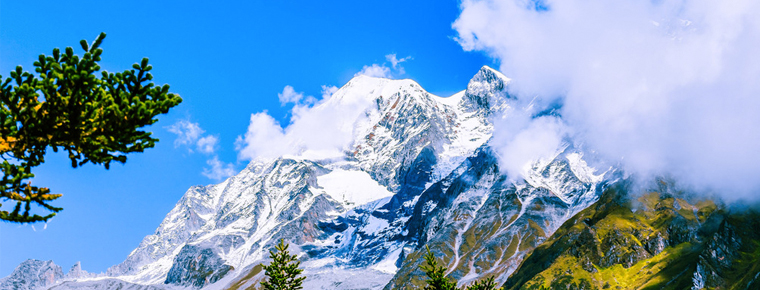
-
Pavilion of Prince TengTengwang pavilion
Tengwang Pavilion, one of the three famous buildings in the south of the Yangtze River, is located on the East Bank of Ganjiang River along the Yangtze River Road in the northwest of Nanchang City, Ji.
Views: 165 Time 2018-12-08 -
Beihai Seabed World
Beihai Seabed World is a national AAAA-level tourist attraction and national marine science education base. It is a large-scale comprehensive ocean hall which mainly displays marine organisms and inte.
Views: 179 Time 2018-12-26 -
Tsing Tan Temple
Qingdan Temple is located 3.5 kilometers west of Fucheng, Zaozhuang City, in the narrow valley of Chu and Han Mountains. It was built in the Tang Dynasty..
Views: 191 Time 2019-02-07 -
Purple Peng mountain
Zipeng Mountain, also known as Liling Mountain and North Jiuhua Mountain, is located in the south of Zipeng Town, Hefei City, Anhui Province. It is about 18 kilometers away from Hefei City. Since the .
Views: 174 Time 2019-03-21 -
Zizhuyuan Park
Zizhuyuan Park is located in the West Third Ring of Beijing, near Baishiqiao in Haidian District, west of Beijing Capital Stadium. Zizhuyuan Park was built in 1953. It was named for the Ming and Qing .
Views: 263 Time 2019-03-22 -
Eight treasures porridge
Babao porridge is a dish of Manchu and Han Dynasty. It tastes sweet and delicious and enjoys a high reputation..
Views: 221 Time 2019-03-26 -
Butterfly Bucket Encouragement of the Browns
Buzz drum dance is a kind of collective dance of men and women of ancestral origin. It has great improvisation. There are two kinds of dance methods: He Xinfang and.
Views: 308 Time 2019-04-04 -
polyphonic folk song
Multi-voice folk song refers to a couple or a group of singers singing two or more voices at the same time. Some people call it "two-voice folk song" and "polyphony folk song"..
Views: 126 Time 2019-04-28 -
Huaihai Opera
Huaihai Opera, one of the national intangible cultural heritage, is a local traditional drama in Huaian City and Lianyungang City of Jiangsu Province..
Views: 157 Time 2019-05-04 -
Construction Techniques of Tujia Diaojiao Building
Tujia hanging-feet building construction skills, Hubei Xianfeng County, Hunan Yongshun County, Chongqing Shizhu Tujia Autonomous County, local traditional skills, one of the national intangible cultur.
Views: 144 Time 2019-06-23 -
Inkstone Platform Making Skills
Inkstone production skills, Liaoning Province Benxi City, Ningxia Hui Autonomous Region Yinchuan City, Hebei Province Yi County, Shanxi Province Xinjiang County, Gansu Province Zhuoni County, Min Coun.
Views: 87 Time 2019-07-10 -
Yang Liu Qingmu New Year Print
Yangliuqing Wood Printing New Year Picture, Tianjin folk traditional art, one of the national intangible cultural heritage..
Views: 209 Time 2019-07-11
